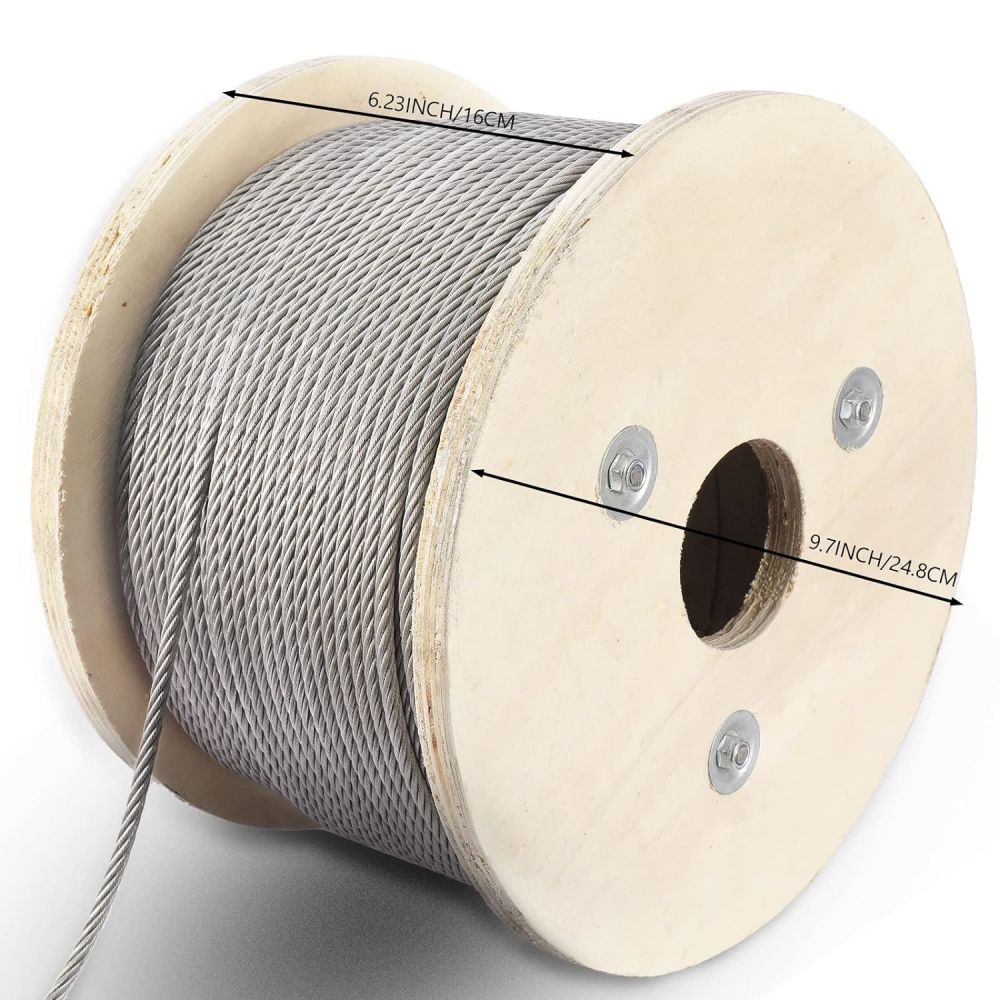
Stainless wire ropes are vital for their strength and corrosion resistance. Blogs offer insights for professionals and DIY enthusiasts on their uses and benefits. Here’s what you can typically expect to find in these blogs:
Steel wire ropes are widely used in various industries due to their strength, durability, and versatility. However, not all steel wire ropes have the same lifespan. The longevity of a steel wire rope is influenced by several factors, including material composition, manufacturing process, and environmental conditions. In this article, we will discuss which steel wire rope has the longest lifespan and the factors that contribute to its longevity.
One of the most critical factors affecting the lifespan of a steel wire rope is its material composition. Steel wire ropes are made from different types of steel, such as carbon steel, alloy steel, and stainless steel. Each type of steel has its own set of properties that can impact the rope’s performance and lifespan.
Carbon steel is the most common type of steel used in wire rope production. It is known for its strength and affordability, making it a popular choice for various applications. However, carbon steel is susceptible to corrosion, which can reduce its lifespan in harsh environments.
Alloy steel contains additional elements such as chromium, nickel, and molybdenum, which provide enhanced strength, corrosion resistance, and wear resistance. These properties make alloy steel wire ropes more durable and longer-lasting than carbon steel wire ropes, especially in corrosive environments.
Stainless steel is highly resistant to corrosion and has excellent tensile strength, making it an ideal choice for applications in harsh environments where corrosion is a significant concern. Stainless steel wire ropes have the longest lifespan among the three types of steel due to their superior corrosion resistance and durability.
Another factor that affects the lifespan of a steel wire rope is the manufacturing process. High-quality wire ropes are produced using advanced manufacturing techniques that ensure uniformity in the wire diameter, strand lay, and core construction. These factors contribute to the rope’s strength, flexibility, and durability, ultimately affecting its lifespan.
Environmental conditions also play a significant role in determining the lifespan of a steel wire rope. Factors such as temperature, humidity, and exposure to chemicals can accelerate the corrosion process and reduce the rope’s lifespan. Proper maintenance and regular inspections can help identify signs of wear and damage, allowing for timely replacement and ensuring the rope’s longevity.
The material composition of a steel wire rope is a critical factor in determining its lifespan. Among the different types of steel, stainless steel wire ropes have the longest lifespan due to their superior corrosion resistance and durability. However, it is essential to consider other factors such as the manufacturing process and environmental conditions to ensure the optimal performance and longevity of the steel wire rope.
A: We offer 302, 304, 316 stainless steel in diameters from 0.15mm to 50mm.
We have various cable constructions and finishes (bright, dull). Black/white PVC coating available.
A: Contact our team to discuss your requirements.
Pricing & Shipping:
A: We source high-quality materials competitively.
A: FOB, CFR, CIF, door-to-door. We’ll advise on the most economical option.
A: We offer stock and efficient mill deliveries with minimized lead times. We’ll provide an estimated timeframe upon confirming your order.
Stainless wire ropes are vital for their strength and corrosion resistance. Blogs offer insights for professionals and DIY enthusiasts on their uses and benefits. Here’s what you can typically expect to find in these blogs: